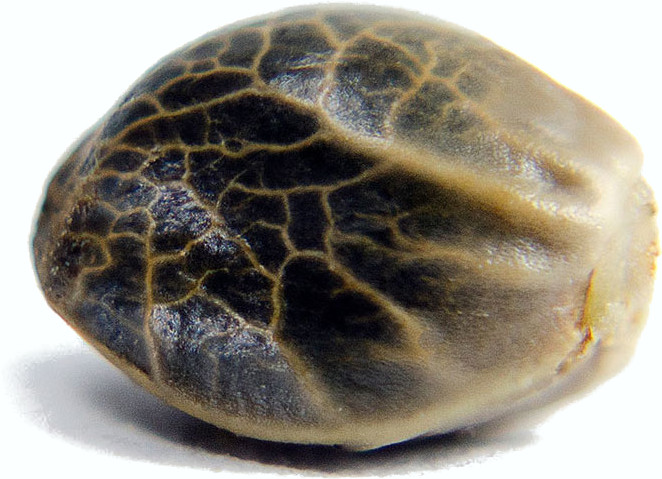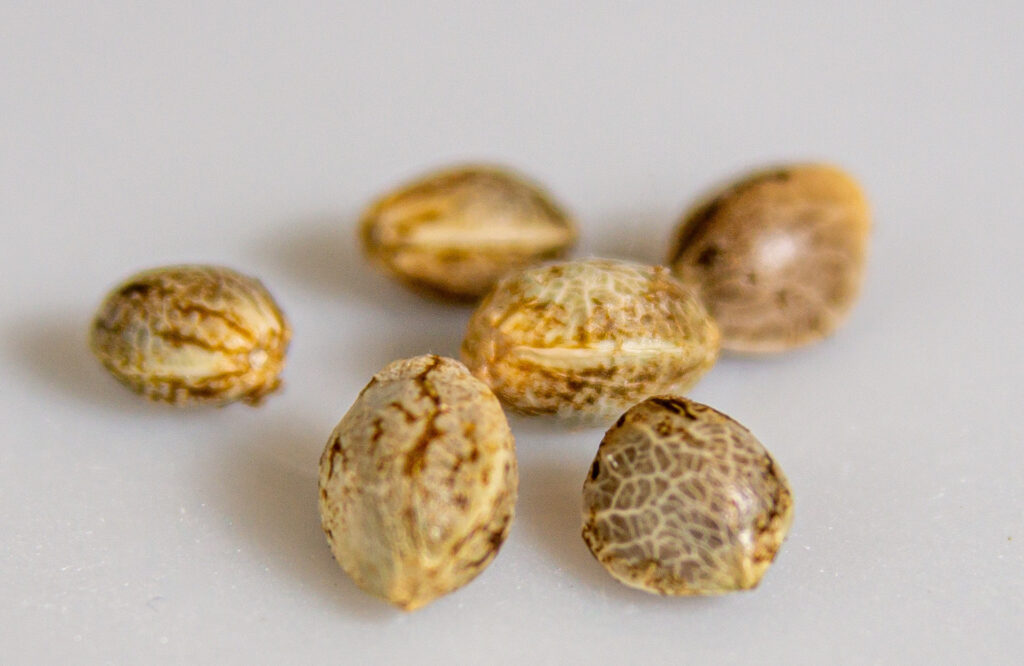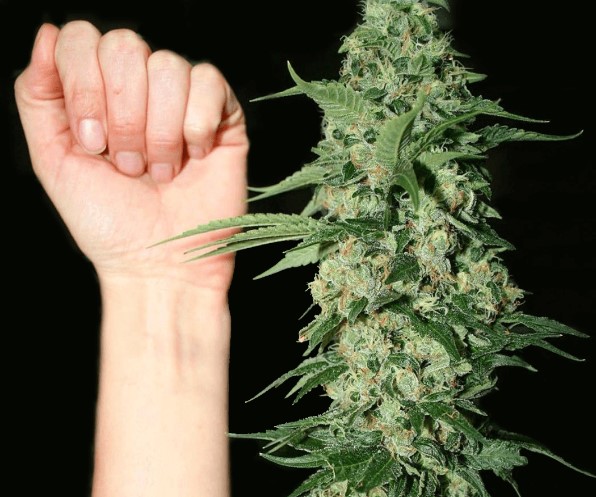Table of Contents
- Importance of Quality Cannabis Seeds
- Choosing a Reputable Cannabis Seed Bank
- What do Weed Seeds Look Like?
- Factors Affecting Germination
- Identifying Healthy Weed Seeds
- Regular Cannabis Seeds
- Characteristics of Regular Seeds
- Identifying Male and Female Plants
- Factors Influencing Grower’s Choice
- Feminized Cannabis Seeds
- Advantages of Feminized Seeds
- Logistical Benefits
- Evolution of Feminized Seed Production
- Autoflowering Cannabis Seeds
- Characteristics of Autoflowering Seeds
- Benefits and Considerations
- Suitable Growing Conditions
- Choosing the Right Cannabis Seeds
- Indica vs. Sativa: Understanding the Differences
- Factors Influencing Seed Selection
- Recommendations for New Growers
Importance of Quality Cannabis Seeds
Quality cannabis seeds serve as the fundamental building blocks of a successful cultivation journey. Their significance cannot be overstated, as they directly influence the characteristics, potency, and overall yield of your cannabis plants. Here, we explore in detail why investing in high-quality cannabis seeds is crucial for any grower looking to achieve a thriving and bountiful harvest.
Cultivating Superior Genetics: High-quality cannabis seeds ensure that your plants inherit desirable traits, including disease resistance, robust growth, and impressive resin production. These genetics lay the foundation for healthy plants, allowing them to withstand environmental stressors and develop into potent, resinous buds. Whether you’re growing for medicinal or recreational purposes, superior genetics directly translate into a more enjoyable and beneficial end product.
Optimizing Yield and Potency: Premium cannabis seeds have been carefully bred and selected to maximize both yield and potency. When you invest in quality seeds, you’re setting the stage for a harvest that is not only abundant but also rich in cannabinoids and terpenes. These compounds contribute to the aroma, flavor, and therapeutic effects of the final product. Choosing high-quality seeds ensures that you’ll enjoy a harvest that meets your expectations in terms of both quantity and quality
Reputable Seed Bank
Selecting a Reputable Seed Bank: Equally important is the process of choosing a reputable seed bank. A reliable seed bank not only provides access to a wide variety of high-quality strains but also offers customer support, discreet shipping, and germination guarantees. When selecting a seed bank, consider factors such as customer reviews, years of experience, and the range of available strains. A trustworthy seed bank will enhance your overall growing experience, providing you with the peace of mind that your investment is well-placed.
By understanding the pivotal role of quality cannabis seeds and making an informed choice when selecting a seed bank, you empower yourself to embark on a cultivation journey that is marked by success, satisfaction, and abundant harvests. In the subsequent sections, we will further explore the intricacies of cannabis seed varieties and cultivation techniques to guide you toward a flourishing garden.

What Do Weed Seeds Look Like? Factors Affecting Germination, and Identifying Healthy Seeds
Understanding the physical attributes of weed seeds is fundamental for any aspiring cannabis cultivator. The appearance of a seed can provide valuable insights into its potential for germination and the overall health of the resulting plant. In this section, we explore the visual cues that indicate healthy weed seeds and delve into the factors that affect their germination process.
Characteristics of Healthy Weed Seeds:
Healthy weed seeds exhibit specific visual traits that signify their viability. Ripe cannabis seeds are typically dark brown in color, often mottled with lighter tones or streaks. Avoid pale green or white seeds, as these are likely immature and less likely to germinate successfully. Furthermore, viable seeds are plump and rounded, indicating a high nutrient content and genetic vigor. Size matters too; larger seeds generally have a higher chance of germination compared to smaller ones. Examining these visual cues can significantly increase your chances of selecting seeds that will sprout robustly.
Factors Affecting Germination:
While the seeds themselves play a crucial role, several external factors can influence the germination process. Seeds with damaged shells, often occurring during handling or transportation, may struggle to sprout. Additionally, environmental extremes, such as exposure to excessive heat or moisture, can adversely affect germination rates. Age is another vital factor; as seeds age, their viability diminishes, reducing the likelihood of successful germination. By ensuring proper handling, storage, and selecting seeds of optimal age, you enhance the conditions for successful germination.
Identifying Healthy Weed Seeds:
Apart from visual cues, the tactile qualities of weed seeds can offer further insights. Healthy seeds should feel firm and solid to the touch, indicating a well-developed embryo inside. Avoid seeds that feel overly soft or brittle, as these may lack the necessary vitality for germination. Additionally, gently pressing a seed between your fingers should not cause it to crack or crumble; such seeds are likely compromised and less likely to sprout.
Regular Weed Seeds: Embracing Nature’s Diversity
Regular weed seeds, often considered the traditional choice among cultivators, offer a fascinating blend of unpredictability and potential. In this section, we delve into the distinctive traits of regular seeds, explore methods for identifying male and female plants, and discuss the factors that influence a grower’s preference for this classic approach.
Characteristics of Regular Seeds:
Regular cannabis seeds are the natural product of the plant’s reproductive process, resulting from the union of a male and a female cannabis plant. These seeds possess a genetic variability that can lead to diverse phenotypes within the same strain. Their unpredictable nature often appeals to seasoned cultivators and breeders seeking to explore and preserve the genetic diversity of cannabis. The ratio of male to female plants in regular seeds is approximately 1:1, meaning growers can expect around half of their plants to be female. This inherent variability contributes to the unique appeal of cultivating regular seeds.
Identifying Male and Female Plants:
Distinguishing between male and female cannabis plants is a crucial skill for growers working with regular seeds. Males typically develop oval-shaped pods, while females produce teardrop-shaped calyxes where flowers form. Early detection of male plants is essential, as their presence in a cultivation space can lead to accidental pollination, reducing the quality and quantity of the harvest. By observing the pre-flowering characteristics and promptly removing male plants, growers can ensure a garden dominated by females, maximizing the yield of resinous, seedless buds.
Factors Influencing Grower’s Choice:
Several factors influence a grower’s decision to opt for regular cannabis seeds. Growers interested in breeding projects often prefer regular seeds due to their genetic diversity, which allows for the creation of new and unique strains. Additionally, some cultivators appreciate the natural growth patterns of regular plants, finding joy in observing the distinct characteristics that each seed can produce. For those passionate about the art of cultivation and the intricacies of cannabis genetics, regular seeds offer an opportunity for exploration and experimentation that can be highly rewarding.
In conclusion, regular cannabis seeds stand as a testament to the natural diversity of cannabis genetics. Their unpredictable nature, combined with the potential for breeding and strain development, makes them a preferred choice for growers seeking a hands-on, immersive cultivation experience. Understanding the characteristics, methods for identifying plant genders, and the motivations behind choosing regular seeds empowers cultivators to embrace the natural variability of cannabis and unlock its full potential.

Feminized Weed Seeds: Cultivating with Precision
Feminized cannabis seeds have revolutionized the way growers approach cultivation, offering a level of precision and predictability that significantly enhances the cultivation experience. In this section, we explore the advantages of using feminized seeds, the logistical benefits they bring to the table, and the intriguing evolution of feminized seed production techniques.
Advantages of Feminized Seeds:
Feminized cannabis seeds are meticulously engineered to produce only female plants, eliminating the guesswork associated with regular seeds. This singular characteristic offers a multitude of advantages. Firstly, all-female crops mean no wasted space or resources on male plants, maximizing the potential for a robust, seedless harvest of resinous buds. Secondly, female plants are the primary source of potent, cannabinoid-rich flowers, making feminized seeds an ideal choice for growers seeking top-tier yields and high-quality bud production. Additionally, the absence of males virtually eliminates the risk of accidental pollination, ensuring every plant can focus its energy on producing the desirable, seed-free cannabis flowers.
Logistical Benefits:
The logistical advantages of feminized seeds are substantial. With no need to worry about identifying and removing male plants, cultivators save time and effort during the cultivation process. This streamlined approach simplifies the entire growing cycle, making it more accessible to beginners and allowing experienced growers to focus on optimizing environmental conditions and nutrients for the female plants. Furthermore, feminized seeds significantly reduce the space required, enabling growers to maximize indoor setups and increase overall yield per square meter. These logistical benefits make feminized seeds an attractive option for both commercial cultivators and home growers looking for efficiency and convenience.
Evolution of Feminized Seed Production:
The evolution of feminized seed production techniques represents a fascinating intersection of science and horticulture. Initially, breeders achieved feminization by stressing female plants into producing pollen, which was then used to fertilize other females. This method, however, occasionally resulted in hermaphroditic tendencies in the offspring. Over time, advancements in genetics and breeding technologies have led to more reliable and stable feminization methods. Contemporary techniques often involve the application of specific hormones or colloidal silver, ensuring a higher success rate without compromising the genetic integrity of the resulting plants. As these techniques continue to evolve, growers can expect even more consistent and dependable feminized seeds in the future.
In summary, feminized cannabis seeds offer a precise, efficient, and convenient way to cultivate high-quality cannabis crops. Their numerous advantages, coupled with the ongoing refinement of feminization methods, make them an indispensable choice for growers aiming for exceptional yields and top-tier buds. By embracing feminized seeds, cultivators can elevate their growing experience and enjoy a more straightforward, rewarding cultivation journey.
Autoflowering Weed Seeds: Embracing Effortless Cultivation
Autoflowering cannabis seeds have redefined the landscape of cannabis cultivation, offering a unique set of characteristics and benefits that cater to growers seeking simplicity and rapid harvests. In this section, we explore the distinct traits of autoflowering seeds, their advantages, considerations, and the ideal growing conditions that maximize their potential.
Characteristics of Autoflowering Seeds:
Autoflowering cannabis seeds possess a remarkable genetic trait that allows them to transition from the vegetative stage to the flowering stage automatically, regardless of the light cycle. This unique feature is inherited from Cannabis ruderalis, a subspecies native to regions with harsh climates. Autoflowering plants tend to be smaller in size, making them ideal for indoor cultivation and discrete outdoor gardens. Their rapid growth and shortened life cycle mean multiple harvests can be achieved within a single growing season. Additionally, autoflowering strains often exhibit high resilience, making them suitable for novice growers or those cultivating in challenging environments.
Benefits and Considerations:
The advantages of autoflowering seeds are multifaceted. Their ability to flower independently of light cycles enables growers to maintain a consistent cultivation schedule, irrespective of the season. This adaptability is particularly beneficial for outdoor growers in regions with unpredictable weather patterns. Autoflowering plants also mature faster, typically ready for harvest within 10 to 12 weeks from germination, allowing for quick turnaround times and continuous cultivation cycles. However, it’s essential to consider that autoflowering strains may have slightly lower THC levels compared to photoperiod counterparts. Despite this, advancements in breeding have resulted in high-potency autoflowering varieties, catering to a diverse range of preferences.
Suitable Growing Conditions:
Autoflowering cannabis plants thrive in specific growing conditions that optimize their unique traits. One of the key considerations is light exposure. While autoflowering plants do not rely on light cycles to trigger flowering, providing 18 to 20 hours of light per day during the vegetative stage can promote robust growth and maximize yields. Adequate light intensity, whether from natural sunlight or artificial sources like high-quality LEDs, is crucial for healthy development. Additionally, well-draining soil, proper ventilation, and regular feeding with balanced nutrients tailored to the plant’s lifecycle stages contribute to successful autoflowering cultivation. Indoor growers often utilize techniques like Low Stress Training (LST) to maximize light penetration and enhance bud development, ensuring a bountiful harvest despite the compact size of autoflowering plants.
In conclusion, autoflowering cannabis seeds offer a convenient and efficient cultivation experience, making them an excellent choice for growers with limited space or those seeking rapid harvests. By understanding their unique characteristics, benefits, and suitable growing conditions, cultivators can harness the full potential of autoflowering seeds and enjoy a seamless, rewarding growing journey.
Choosing the Right Weed Seeds: A Comprehensive Guide
Selecting the perfect cannabis seeds is the foundational step in any cultivation endeavor. The diversity in strains, genetics, and effects offers a world of possibilities for growers. In this section, we explore the crucial factors involved in choosing the right cannabis seeds, including the distinctions between Indica and Sativa strains, the key influencers in seed selection, and tailored recommendations for new growers embarking on this exciting journey.
Sativa vs. Indica: Understanding the Differences:
Indica and Sativa are two primary subspecies of cannabis, each with distinct characteristics. Indica strains typically exhibit shorter stature, broader leaves, and a bushier appearance. They are renowned for their relaxing, sedative effects, making them ideal for nighttime use or users seeking relief from pain and insomnia. Sativa strains, on the other hand, are generally taller with narrower leaves. They offer an energizing, uplifting experience, making them popular choices for daytime use and creative activities. Hybrid strains, a blend of Indica and Sativa genetics, combine the best of both worlds, offering a balanced experience that caters to diverse preferences.
Factors Influencing Seed Selection:
Several factors influence the selection of cannabis seeds, including the desired effects, growing environment, and personal preferences. Consider your cultivation space – whether it’s indoors or outdoors, the available space, and the climate. Some strains thrive in specific environments, so understanding the needs of your chosen strain is essential. Additionally, assess your experience level; certain strains are more forgiving for beginners, while others demand a higher level of expertise. If you’re cultivating for medicinal purposes, consult with a healthcare professional to identify strains that target specific symptoms or conditions. Lastly, factor in the flowering time; some strains mature faster, allowing for quicker harvests.
Recommendations for New Growers:
For novice growers, starting with strains that are resilient, forgiving, and relatively easy to manage is crucial. Consider beginner-friendly strains such as Northern Lights, Blue Dream, or AK-47, which are renowned for their robust growth and resistance to common issues. Opt for feminized seeds to eliminate the guesswork associated with gender identification, ensuring an all-female crop for seamless cultivation. Additionally, choose strains with shorter flowering periods to experience the rewards of your efforts sooner. Engage with online communities and forums to gather insights from experienced growers, enabling you to navigate potential challenges more effectively. Lastly, invest in quality growing equipment and follow reliable cultivation guides to set a strong foundation for your cannabis growing journey.
In conclusion, choosing the right cannabis seeds is a personalized decision that demands careful consideration of your goals, preferences, and growing conditions. By understanding the differences between Indica and Sativa, evaluating influential factors, and heeding recommendations tailored to your experience level, you can embark on your cultivation adventure with confidence and anticipation, ensuring a successful and fulfilling harvest.

